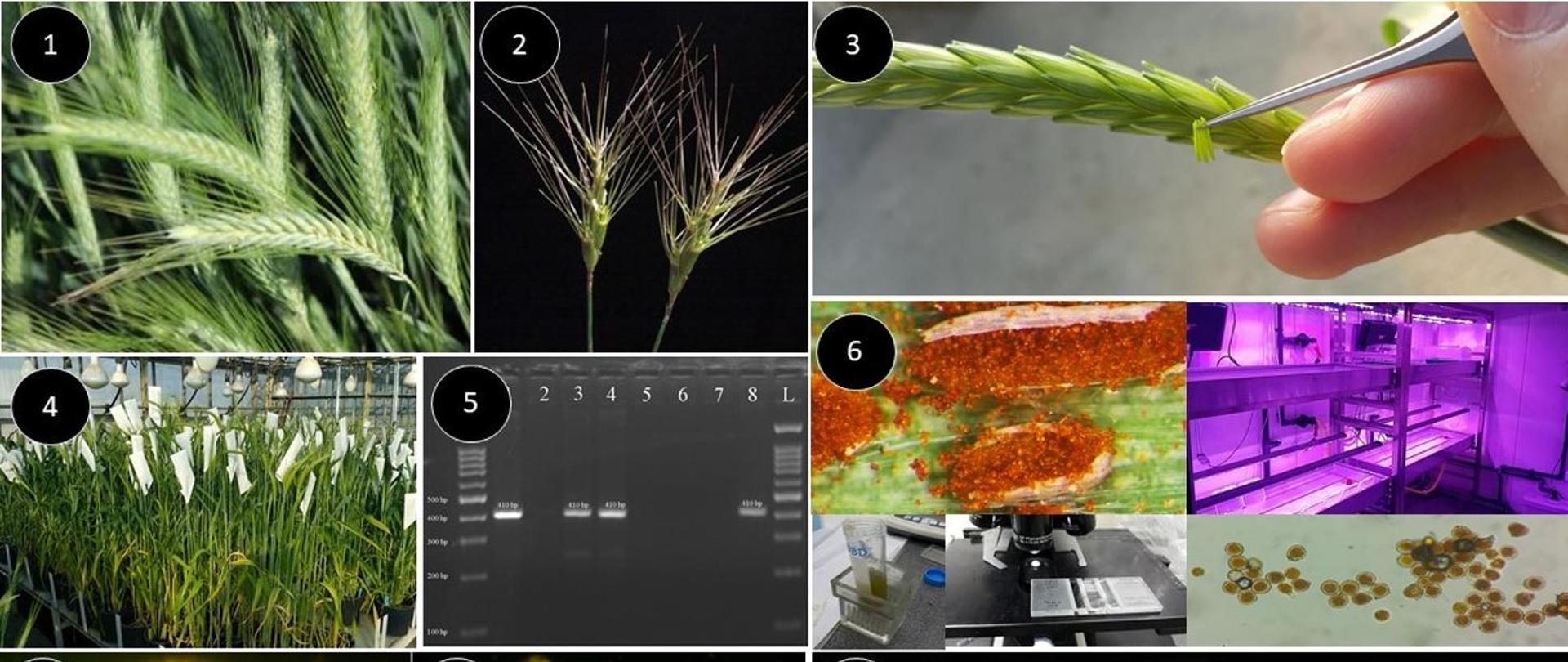Use of chromosome engineering to efficiently transfer chromosome segments of uncultivated goatweed

 Project title
Project title
Use of chromosome engineering to efficiently transfer chromosome segments of uncultivated goatweed (Aegilops sp.) species containing genes responsible for resistance/tolerance to disease caused by pathogenic fungi into cultivated triticale (xTriticosecale Wittmack)
 Name of Beneficiary/Beneficiaries
Name of Beneficiary/Beneficiaries
Michał Tomasz Kwiatek (Institute of Plant Genetics, Polish Academy of Sciences, Poznań)
 Name of programme
Name of programme
National programmes
 Competition
Competition
LEADER VIII
 Project value
Project value
905 900 PLN
 Funding value
Funding value
905 900 PLN
 Project delivery period
Project delivery period
from 01.02.2018 to 31.01.2021
Meet our team

See the result of our work

What problem does our project solve?
The aim of the project was to produce new genotypes of cultivated triticale resistant to brown and yellow rusts caused by Puccinia fungi . The project expanded the genetic diversity of cultivated triticale using chromosome engineering methods, which involved the transfer of selected chromosome segments from the di- and tetraploid goats Ae. tauschii Coss. and Aegilops kotschyii Boiss. Non-cultivated species of Aegilops sp. have wide genetic variability, which is used in studies of introgression of beneficial traits into cultivated cereal species due to the close degree of genetic relatedness. They are a valuable source of genes for resistance to diseases caused by pathogenic fungi, some of which have been successfully introduced into cultivated wheat (Triticum aestivum L.) varieties.
The project was carried out in three phases of research and development. The aim of step one was to introduce chromosomes from Aegilops species carrying rust resistance genes into triticale. The work crossed monosomic forms of triticale, possessing the Aegilops chromosome - the donor of the desired resistance gene locus - with translocation-ditelosomic forms of triticale with a deleted Ph1gene, responsible for the restrictive conjugation of homologous chromosomes, and a fragmented chromosome 2R as recipient. The aim of the second stage of the study was to reduce the size of the inserted foreign chromatin segment in triticale chromosome 2R. As a final research step, the transferred resistance genes were accumulated in the triticale genome. For this purpose, the resulting recombinants were crossed. Chromosomal composition and the presence of resistance genes were identified using both molecular cytogenetic methods and genetic marker analysis. The obtained forms were also analysed for resistance expression analysis in inoculation and physiological tests, determining pathogen-plant interactions.
Who is going to benefit from the project results?
The beneficiaries of the project's results can be breeding and seed companies, and ultimately agricultural producers and consumers of grain products. The forms of triticale obtained in the project can be implemented in the production of improved cultivated triticale varieties with increased resistance to diseases caused by pathogenic fungi. They are currently envisaged as the subject of implementation in the production process of cultivated triticale varieties by DANKO Hodowla Roślin Sp. z o.o. with its registered office in Chorynia. Implementation into the production process, will consist of incorporating the donated plant material into breeding programmes based on biotechnological methods and techniques allowing the breeding cycle to be shortened, as well as selection work and field experiments aimed at producing improved varieties of crop triticale conducted by DANKO Hodowla Roślin Sp. z o.o. with its registered office in Chorynia.